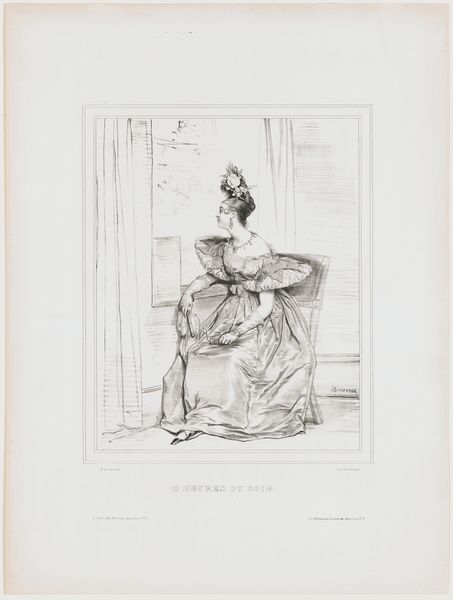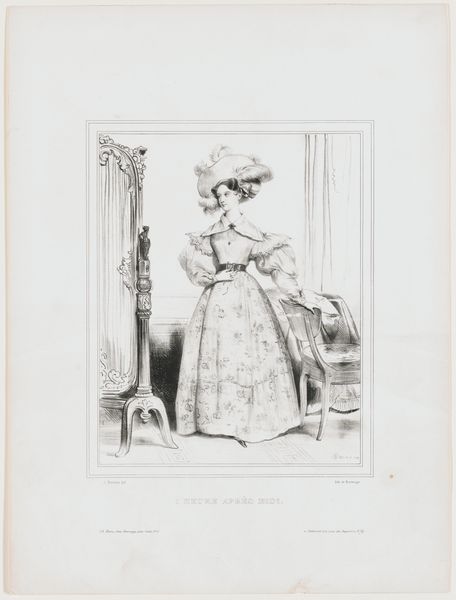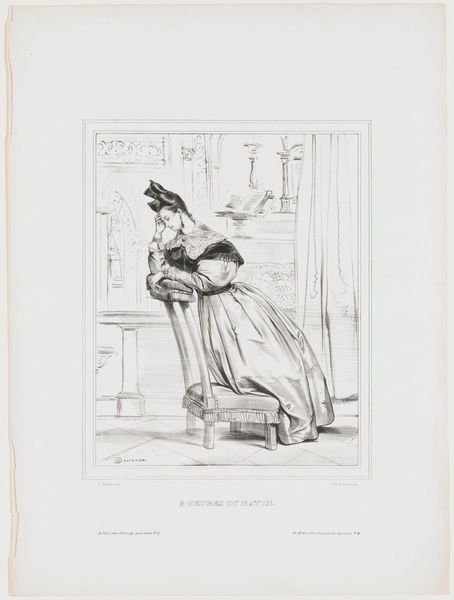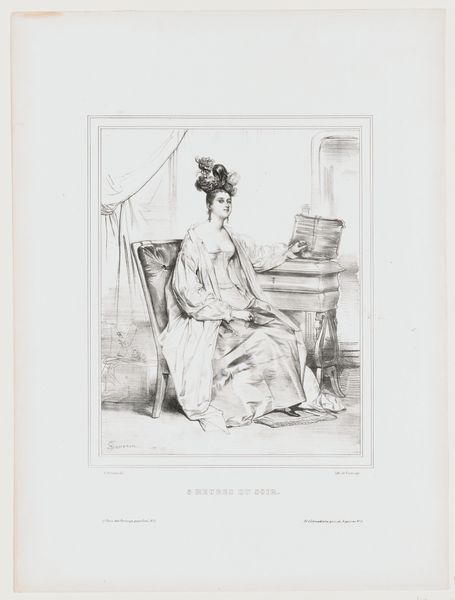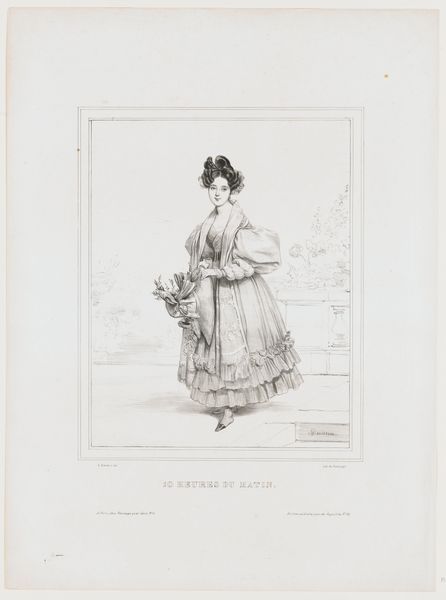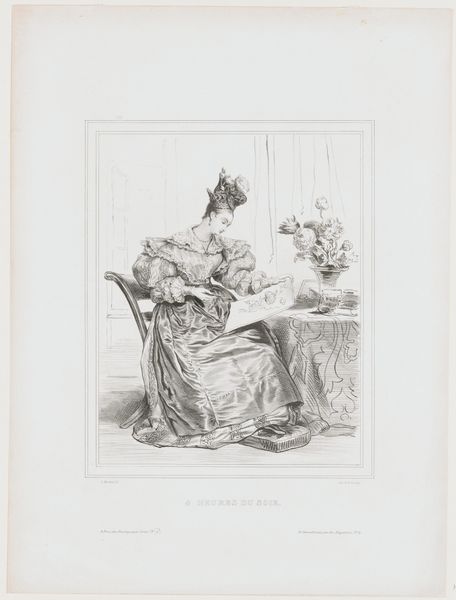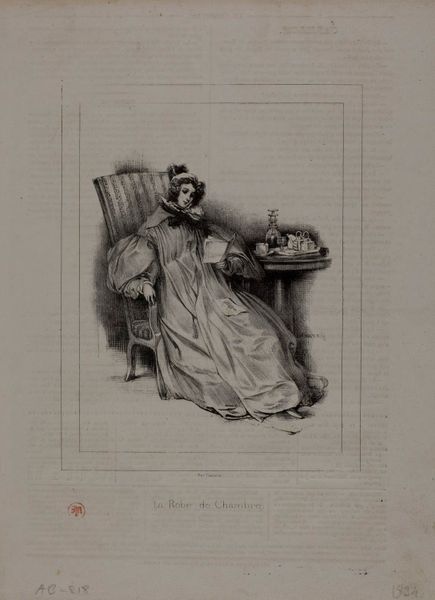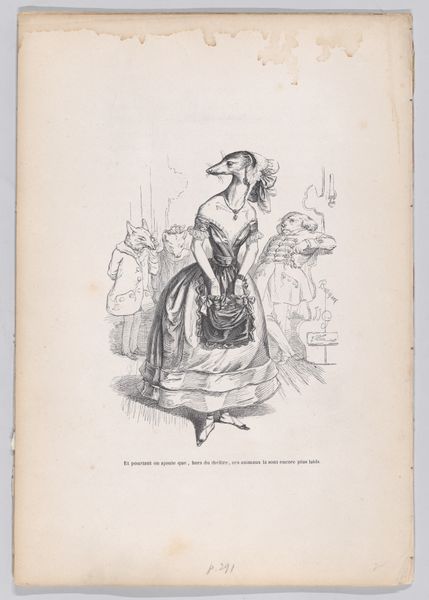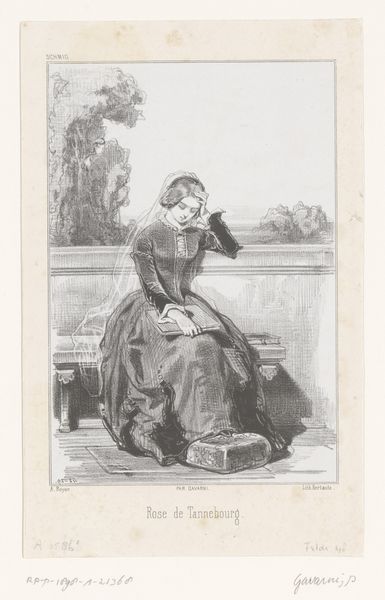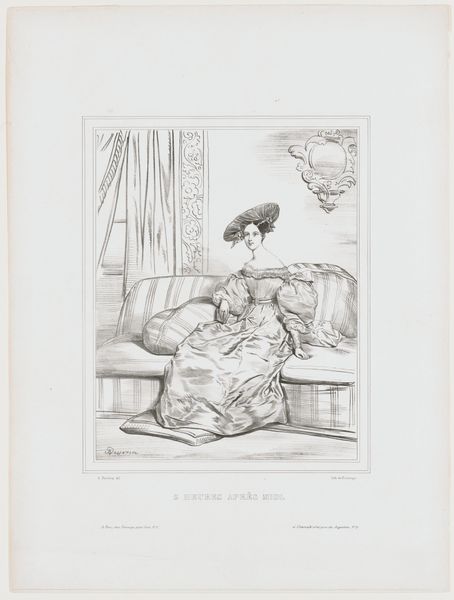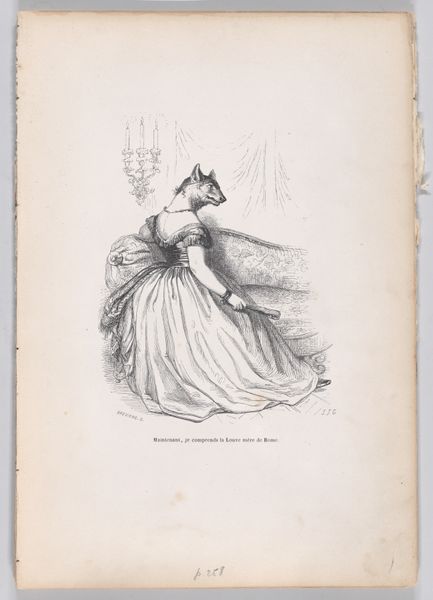
drawing, lithograph, print
#
portrait
#
drawing
#
lithograph
# print
#
etching
#
romanticism
#
genre-painting
Dimensions: 13 1/4 x 9 1/4 in. (33.66 x 23.5 cm) (image)
Copyright: Public Domain
Curator: I find myself drawn to the way light defines the sitter's gown in this lithograph. It feels almost sculptural, doesn’t it? Editor: It does have an almost photographic softness despite being a lithograph, something about the delicate gray scale perhaps. Tell me more about it. Curator: Of course. This is "Midi. Mme. A. Deveria" created circa 1830 by Achille Devéria. The piece is a striking example of early 19th-century portraiture, using the print medium with real sensitivity. Editor: And speaking of sensitivity, it’s hard not to interpret that downturned gaze as pensive or perhaps melancholy. You’re immediately aware of her inner life. And look at those sleeves—the volume is immense. They really anchor the composition. Curator: Indeed. Devéria utilizes line and shadow expertly, building depth within what could have easily been a flat, lifeless representation. But instead the eye traces every fold, curve, and texture. Note how he has contained the picture in two rectangles. Editor: Contextually, lithography democratized art to an extent, making portraits like this more accessible to a burgeoning middle class in post-Revolutionary France. How do you think its reception played out, what role do you imagine it played in the Salon? Curator: I imagine it found admirers. While not groundbreaking formally, its subtle tonal gradations certainly demonstrate considerable mastery of the lithographic process. You will see this echoed in salon works which favored romantic and literary content. The figure enclosed by this frame creates an image within an image, further solidifying its status. Editor: You know, when you consider the period, this feels very much of its time – a convergence of new technologies impacting portraiture alongside the rigid formalism one expects. Curator: A keen insight; what appears intimate is rigorously planned. The placement of the chair, table, objects within the periphery – not a single element is random. Editor: In any event, observing it now, there is a certain quiet drama playing out. And the very muted tonality brings this moment from another time directly into the present. Thank you for those thoughts. Curator: My pleasure. Hopefully, this encourages all of us to look a bit closer, to consider how surface technique intertwines with historical context and visual language.
Comments
No comments
Be the first to comment and join the conversation on the ultimate creative platform.
